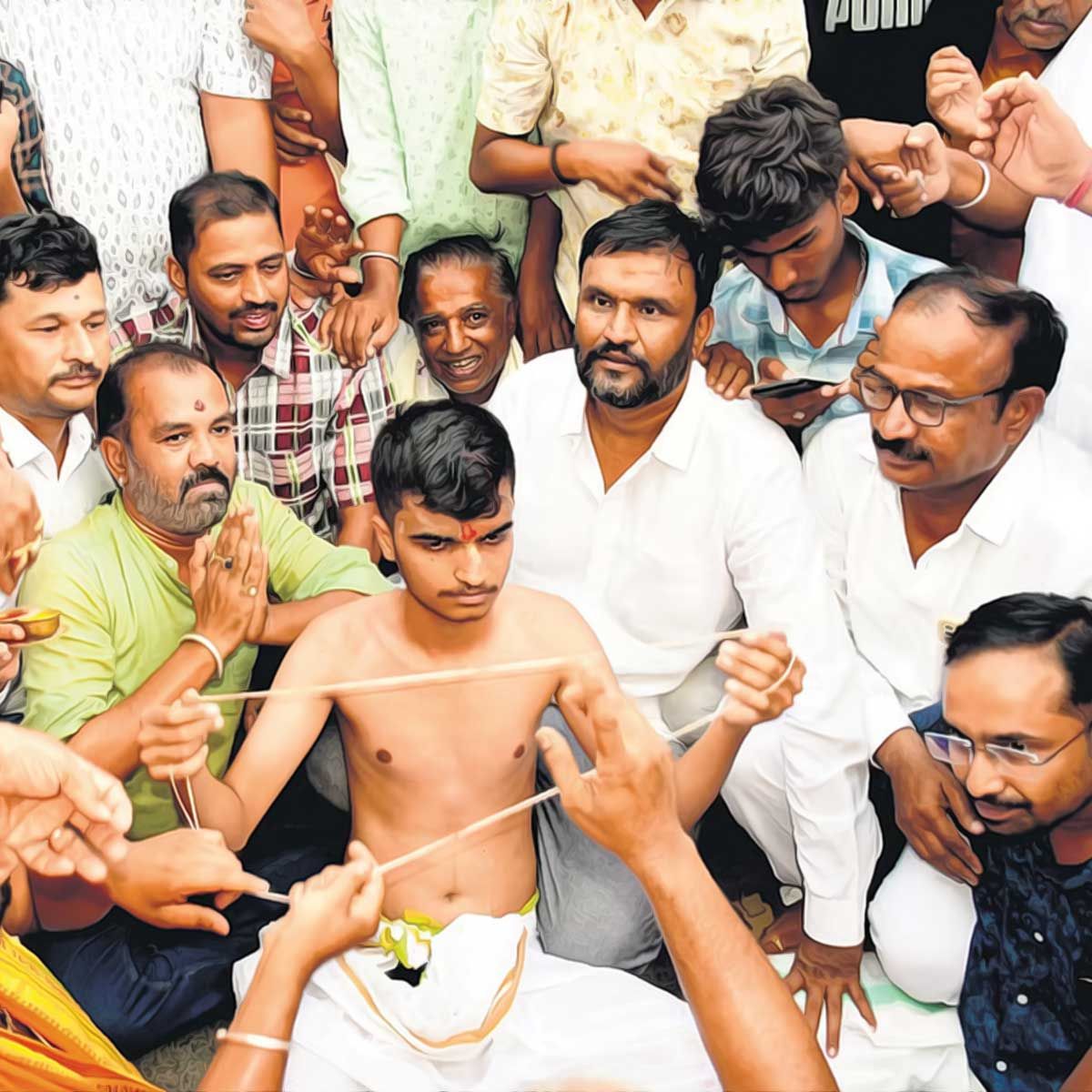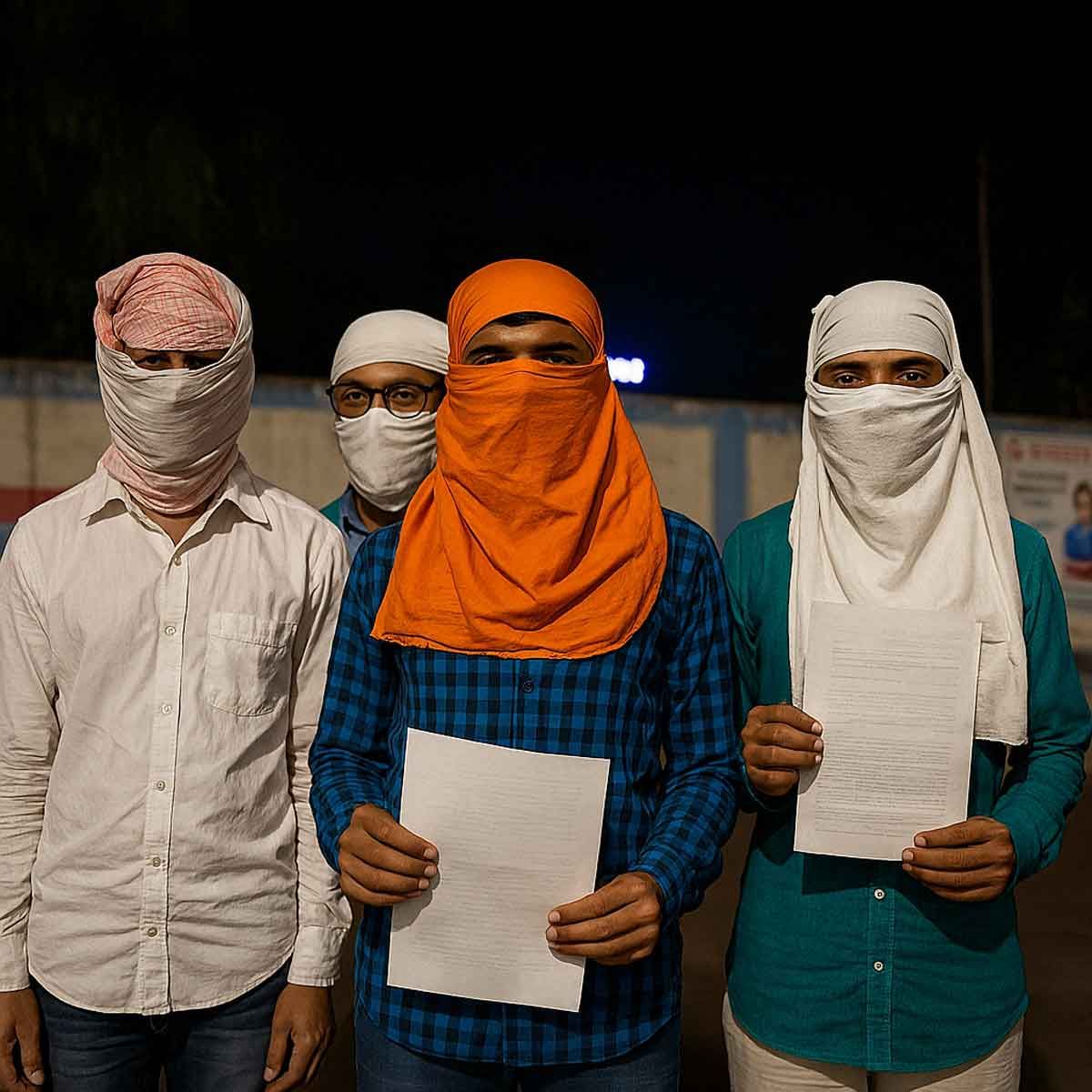More Coverage
Twitter Coverage
Satyaagrah
Written on
Satyaagrah
Written on
Satyaagrah
Written on
Satyaagrah
Written on
Satyaagrah
Written on
JOIN SATYAAGRAH SOCIAL MEDIA
"Research is creating new knowledge, without which there is no progress": National Research Foundation - a visionary initiative by the Indian govt aimed at centralizing funding for scientific & academic research with an ambitious target of ₹50,000 crore

The National Research Foundation (NRF), a central body that's been proposed to fund scientific and academic research, is planning to tap into Corporate Social Responsibility (CSR) funds from private companies and public sector entities. They are projected to receive ₹50,000 crore over the next five years, a substantial chunk of which, around ₹36,000 crore, is expected from the private sector.
|
However, there are some questions about how this large-scale funding will be secured and what autonomy the body will have over these funds.
The concept of tapping into CSR funds comes as an exciting, innovative measure. According to insiders involved in establishing the NRF, the hope is that businesses will direct a portion of their CSR funds to the NRF. For context, CSR is a self-regulating business model where companies contribute towards social, economic, and environmental betterment. In the financial year 2021-2022, the Ministry of Corporate Affairs reported that companies spent ₹14,588 crore on CSR initiatives. These initiatives covered areas like education, healthcare, and sanitation, which account for almost 70% of all CSR fund allocations. However, it's worth noting that the government does not dictate where these CSR funds are spent, which brings into question how they will encourage companies to contribute to the NRF.
To encourage such contributions, those drafting the NRF Bill have proposed tax incentives for companies that dedicate a part of their CSR budget to the foundation. This bill was approved by the Union Cabinet on June 28, 2023, and it's set to be tabled in Parliament later this year. The bill outlines the NRF's primary objectives, which include increasing private sector contributions to Indian research and ensuring a significant portion of government-allocated funds reach state universities and colleges.
Despite these ambitious goals, the reality of India's current research landscape paints a different picture. The Ministry of Science and Technology reports that only 36% of India's research expenditure, totalling around ₹1.2 lakh crore, was sourced from the private sector in the 2019-20 financial year. This is a stark contrast to countries with strong science and technology infrastructures, where the private sector provides up to 70% of research funding. As a result, India's spending on research and development (R&D) remains at 0.6% of its Gross Domestic Product (GDP), significantly lower than the global average of 1.8%.
|
In contrast, powerhouse countries like China, Japan, South Korea, and the U.S. see a much higher contribution from the private sector towards research expenditure. India's research funding is primarily consumed by the Defence Research and Development Organisation, the Department of Space, the Department of Atomic Energy, and the Indian Council of Agricultural Research. The remainder is split between the Ministry of Science and Technology, the Council of Scientific and Industrial Research, and the Indian Council of Medical Research.
Since the turn of the century, India has seen an increase in the proportion of research expenditure contributed by the industrial sector (including both private and public entities). From a low of 20% in 2000, it peaked at 45% in 2012-13. However, in recent years this figure has remained stagnant, and even decreased, with the latest reported figure being 41% in 2020-21. This statistic highlights the importance and potential impact of the NRF in stimulating more private sector investment in research.
The NRF will not operate in a vacuum. It is set to incorporate the existing Science and Engineering Research Board (SERB), which currently oversees collaborative industrial research projects, co-funded by industry and government. The Department of Science and Technology will administratively manage the NRF, while a board consisting of renowned researchers and professionals from various fields will govern it. This demonstrates the broad-reaching impacts and implications of the NRF across all government ministries.
|
However, there are concerns about the NRF's autonomy. Its initial vision was as an independent entity, with its funds not subjected to general financial rules and a board and CEO with full autonomy over the direction of research funds. Yet, the proposed structure includes the Science Minister and Education Minister as vice-presidents, and the Science Ministry will administratively control it, raising questions about how independent the NRF can truly be.
The NRF's mission is not just about raising funds but also addressing "inequality" in research funding. Currently, half of all research funding is monopolized by prestigious institutions like the Indian Institutes of Technology, the Indian Institute of Science, and the Indian Institutes of Science Education and Research. The NRF intends to address this imbalance and ensure that State universities, which outnumber centrally funded organizations, also receive adequate research funding.
However, the path to achieving this is not straightforward. One solution being considered involves adjusting the awarding process of grants. This would mean giving more weight to proposals co-authored by an individual from a top university and an individual from a State university, potentially leading to more collaboration and learning between different institutions.
Finally, there is a question of sourcing adequate funds. It's crucial for institutions with significant research budgets, like the DAE and DoS, to actively collaborate with State universities on joint research projects. Simply relying on funds from the private sector and science ministries may not suffice, illustrating the multifaceted challenge that lies ahead for the proposed National Research Foundation.
|
History of the National Research Foundation.
The NRF is an independent statutory body established through the National Research Foundation Act (Act No 23 of 1998), following a system-wide review conducted for the Department of Arts, Culture, Science and Technology (DACST). The new entity incorporated the functions of the research funding agencies that were previously servicing various sections of the research community, namely the former Centre for Science Development (CSD) of the Human Sciences Research Council (HSRC) and the former Foundation for Research Development (FRD) that included several National Research Facilities.
As a government mandated research and science development agency the NRF funds research, the development of high-end Human Capacity and critical research infrastructure to promote knowledge production across all disciplinary fields. The goal of the NRF is to create innovative funding instruments, advance research career development, increase public science engagement and to establish leading-edge research platforms that will transform the scientific landscape and inspire a representative research community to aspire to global competitiveness. The NRF promotes South African research and innovation interests across the country and internationally, and together with research institutions, business, industry and international partners we build bridges between research communities for mutual benefit that contributes to National Development.
Support for Students
The NRF provides support for students through financial grants and non-financial support. Students can be supported as free-standing grant holders, or as grant holder-linked bursaries (where the grant holder has nominated students that he/she will support). The NRF has focussed on transformation and excellence, and this is shown by the increase in Female and Black African students supported. The dashboards will be regularly updated, and more data will become available once the NRF has validated and cleaned the historical data. Please note that Beneficiaries are defined as institutions or organisations who received the funding and administered the support to the students, and may not necessarily be the higher education institution at which the student was registered for the year.
 Support Us
Support Us
Satyagraha was born from the heart of our land, with an undying aim to unveil the true essence of Bharat. It seeks to illuminate the hidden tales of our valiant freedom fighters and the rich chronicles that haven't yet sung their complete melody in the mainstream.
While platforms like NDTV and 'The Wire' effortlessly garner funds under the banner of safeguarding democracy, we at Satyagraha walk a different path. Our strength and resonance come from you. In this journey to weave a stronger Bharat, every little contribution amplifies our voice. Let's come together, contribute as you can, and champion the true spirit of our nation.
 |  |  |
| ICICI Bank of Satyaagrah | Razorpay Bank of Satyaagrah | PayPal Bank of Satyaagrah - For International Payments |
If all above doesn't work, then try the LINK below:
Please share the article on other platforms
DISCLAIMER: The author is solely responsible for the views expressed in this article. The author carries the responsibility for citing and/or licensing of images utilized within the text. The website also frequently uses non-commercial images for representational purposes only in line with the article. We are not responsible for the authenticity of such images. If some images have a copyright issue, we request the person/entity to contact us at This email address is being protected from spambots. You need JavaScript enabled to view it. and we will take the necessary actions to resolve the issue.
Related Articles
- "We live in a world defined by the rapid pace of technological change": India is experiencing tremendous economic growth under PM Modi. Look forward to continuing our strong partnership and supporting India's G20 presidency - Google CEO Sundar Pichai
- "If art is to have a special train, the critic must keep some seats reserved on it": In a momentous event, PM Narendra Modi flagged off Puri-Howrah Vande Bharat Express in Odisha, marking a significant milestone in India's railway infrastructure evolution
- "Cyberspace undeniably reflects some form of geography": Ashwini Vaishnaw launched "Bharat 6G Alliance" for better collaboration between Govt, industry and academia in developing indigenous 6G products, India already has 200+ patents for 6G
- ISRO successfully tested the Gaganyaan Service Module Propulsion System (SMPS) on July 19, 2023 at ISRO Propulsion Complex (IPRC) , Mahendragiri
- "Beyond gravity, within safety": ISRO's Gaganyaan mission progresses with Drogue Parachute tests, prioritizing astronaut safety, aiming to send a crew to 400 km orbit for 3 days, it utilizes Human Rated LVM3 and comprehensive training in Bengaluru
- Chandra - NASA’s advanced X-Ray Observatory is named after a brilliant Indian scientist & Nobel Prize-winner Subrahmanyan Chandrasekhar, a Flagship-class space telescope is an Earth satellite in a 64-hour orbit, notably its mission is ongoing as of 2023
- "And the winds and the waves are always on the side of the ablest navigators": ISRO successfully launched GSLV-F12/NVS-01 Mission from SDSC-SHAR, Sriharikota, NVS-01 first of the India's second-generation NavIC satellites that accompany enhanced features
- "Global trust, local talent: India's invitation to the semiconductor world": PM Modi announces that India's moment has arrived in the semiconductor, Global leaders unite in praise as India gets ready to take center stage in the semiconductor industry
- "Innovation is the calling card of the future": Jaldost, a revolutionary airboat by Bengaluru's National Aerospace Laboratories, powers through aquatic weeds, carving the path towards preserving cleaner water bodies, a testament to indigenous innovation
- The legend and a genius that was Jagadish Chandra Bose: Champion of East and West Who Almost Invented the Radio
- In a world where robots fetch more, even the canniest of canines find themselves in a tail-wagging contest of wits & whimsy; Muks Robotics rolls out the red carpet for AI, sparking a playful rivalry that leaves every dog wondering who's really the top dog
- "Igniting India's resurgence: An epochal infrastructural odyssey": PM Modi inaugurates India's longest cable-stayed Sudarshan Setu, ignites a ₹4,150 crore development wave in Dwarka, embarks on a spiritual dive in Dwarka, blending heritage with progress
- “Is artificial intelligence less than our intelligence?”: In a magnificent leap forward, behold the unveiling of India's first autonomous wonder vehicle amidst the remarkable symphony of innovation, the zPod, by the Bengaluru-based startup Minus Zero
- "PM Modi's dream project" - Govt investing 481 crores to transform Badrinath, a major Hindu pilgrimage into a Spiritual smart hill by 2025 under Badrinath Master Plan 2023, initiative will enhance local economy, tourism, accessibility, and infrastructure
- "There is no law except the law that there is no law": Samudrayaan with Matsya 6000 is set to unlock the ocean's enigmatic heart, heralding a new era in harnessing marine resources for a sustainable future symbolizing a big leap in deep-sea exploration




























